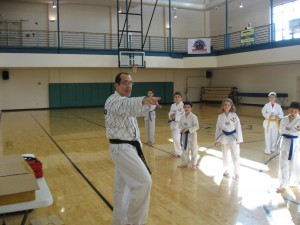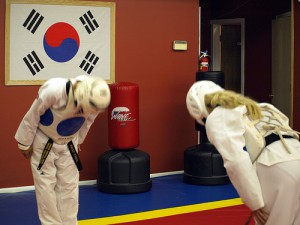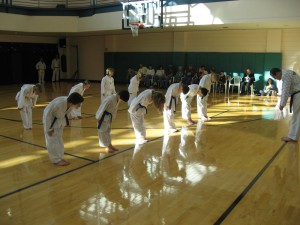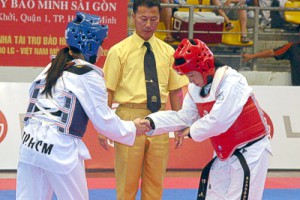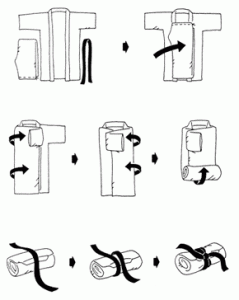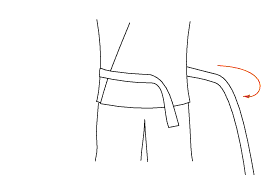Your Taekwondo Do Jang is simply the place where you train. ‘Do’ means ‘way’ or ‘path’ and ‘Jang’ means ‘place’. Put them together, and you get the ‘place where you practice the way’. In our case the way of the hand and foot- Taekwondo.
By definition, Etiquette is a code of behavior that delineates expectations for social actions, according to contemporary conventional norms within a society, social class, or group. In other words, Etiquette is a set of rules or “things to do or don’t”, in certain places and situations. Even easier to understand, “your manners”.
It is funny, but in French Etiquette means ticket or admission, so to “belong”, sometimes we have to mind our manners.
Etiquette plays a significant role in Martial Arts training regardless of style. All martial arts students will encounter and adhere to some form of etiquette whether they practice Taekwondo, Karate, Chinese Kung Fu, Aikido, Judo, or one of the many other styles of martial arts.
Martial arts etiquette is a prescribed set of standards for a person’s conduct and attitude toward themselves and others. Etiquette in the Do Jang ensures a positive and safe environment that is necessary to accompany the physical aspects of Taekwondo training.
Bowing
Bowing is a strong tradition in the martial arts. It is a sign of respect and humility. The martial artist bows towards the flags before entering and leaving the training area, as well as before and after practice with a partner. The Asian custom of bowing is comparable to the western handshake.
How to bow properly:
- Stand with your feet together and hands at your the sides of your legs.
- Bend over at the waist 30-45 degrees while keeping your back straight.
- It is Korean tradition not to look up at the person to whom you are bowing – this implies a lack of trust.
- A lower belt should wait for the senior belt to straighten first.
Handshaking
The bow is the traditional Korean greeting, although it is often accompanied by a handshake. To show respect when bowing and shaking hands, support your right forearm with the back of your left hand under your elbow. Junior students should always wait for the senior to extend his/her hand first.
Uniform- Dobok and Personal Appearance
Your Taekwondo uniform is called traditionally Dobok, and it is an important part of your Taekwondo experience because not only represents your art, it also represents your school, your teacher, your rank, and years of history and tradition. Do means “way” and Bok “clothing”. A traditional Taekwondo uniform is white in color, but a black stripe around the V-neck of the shirt is used by Black Belts and Poom Belts in some schools.
A Dobok has three main parts:
- Pants (Ha’i).
- V-neck shirt or pullover (Shyeochu).
- Belt (Dhee).
You should wear your Dobok with pride and honor.
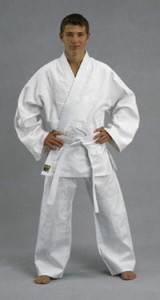
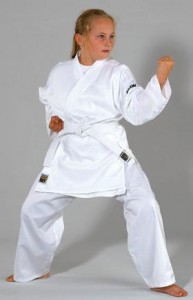
How to fold your Dobok
A Taekwondo belt reveals the experience and skill level of the martial artist. It is worn at all times at the Do Jang for everyone to see. Your belt is a reward for hard work and dedication. Earning them requires study, time and practice. Traditionally, a student’s belt should never touch the ground, and it should never be worn outside of the Do Jang.
The belt is a very important part of the uniform, never forget to bring it to class, without it your uniform will be incomplete.
How to tie your belt or Dhee
Always observe the highest standard of personal cleanliness in class. Personal hygiene is very important. Keep nails on both hands and feet trimmed back to protect both yourself and your others. Always wash or bathe before and after class.
Behavior in the Do Jang
- Shoes and socks should always be removed before entering the training area.
- When entering and leaving the Do Jang, salute the flag and bow to all Black Belts and Instructors.
- All students should help keep the Do Jang neat and orderly.
- Students should arrive to class on time. If you arrive late, wait at the side of the Do Jang where you can be seen by the instructor and wait to be called in to join the class. Apologize for being late as this often interrupts the lesson. Students who are late need to ask permission to join class before participating in the class in session. When given permission to join, never walk in front of the class, always access your place from behind.
- During class students should maintain a level of respect and seriousness. Unnecessary noise or talking from students practicing on their own is unfair to the students in class and the instructor.Never disturb a class in progress.
- Never tie your belt or straighten your uniform while facing the flags or other students, especially higher-ranking belts. In some Do Jangs, it is considered disrespectful to stand with your hands on your hips or with your arms crossed while in class.
- Respect your uniform and belt. Keep your uniform clean and never wash your belt. Your belt is not to be worn outside of the Do Jang.
- It is important to keep your fingernails and toenails trimmed and kept short. Long nails can cause scrapes, cuts and torn nails during a workout.
- If you need to excuse yourself from class, bow to the instructor and bow to the class, then exit from the back of the class, never walking in front of anybody.
- If a Black Belt enters the school at anytime all students will acknowledge and bow to the entering Black Belt.
- All Instructors and other Black Belts should be addressed by their respective titles. Use “sir” or “ma’am” or the title “Mr.” Or “Ms.” With the last name.
- No free-sparring or contact is allowed without Black Belt supervision. Do not attempt to practice or execute techniques in sparring which you have not been shown directly by your Master or Instructor.
- Students are responsible for their own equipment – take care of it.
- Always show respect for others and take it upon yourself to help and encourage others. Be courteous to other people’s time and space.
- Cell phones. Use common sense. Turn your cell phone off or on mute before class, if this is not possible, take conversations respectfully outside the Do Jang.
- Chewing gum or other candy should not be brought in to the Do Jang, not only is disrespectful, in can also become a chocking hazard.
- Remove jewelry before entering the Do Jang. Watches, rings, earnings, necklaces and pendants can be damaged while in class. Also these items can injure you and others, so is best to remove them for class.
- When receiving certificates, awards belts etc. from your instructor and examiner, receive with both hands while bowing.
- Many outside behaviors are not accepted in the Do Jang. Respect your instructors and fellow students by: paying attention, working hard, not disrupting class and not using profanity.
The 5 Tenets of Taekwondo
- Courtesy (Ye Ui).
To be thoughtful and considerate of others. Taekwondo practitioners should be polite, and show respect for others.
- Integrity (Yom Chi).
To be honest and good, earn respect and trust.
- Perseverance (In Nae).
This basically stands for your internal drive. Challenges allow us to improve ourselves and should therefore not be avoided. Always finish what you have started.
- Self control (Guk Ki).
To have control of your body and mind. A Taekwondo student should practice controlling his actions and reactions under any circusntances.
- Indomitable spirit (Baekjool Boolgool).
To have courage in the face of adversity. A Taekwondo student should never be dominated by, or have his spirit broken by another. Never give up, never surrender.

